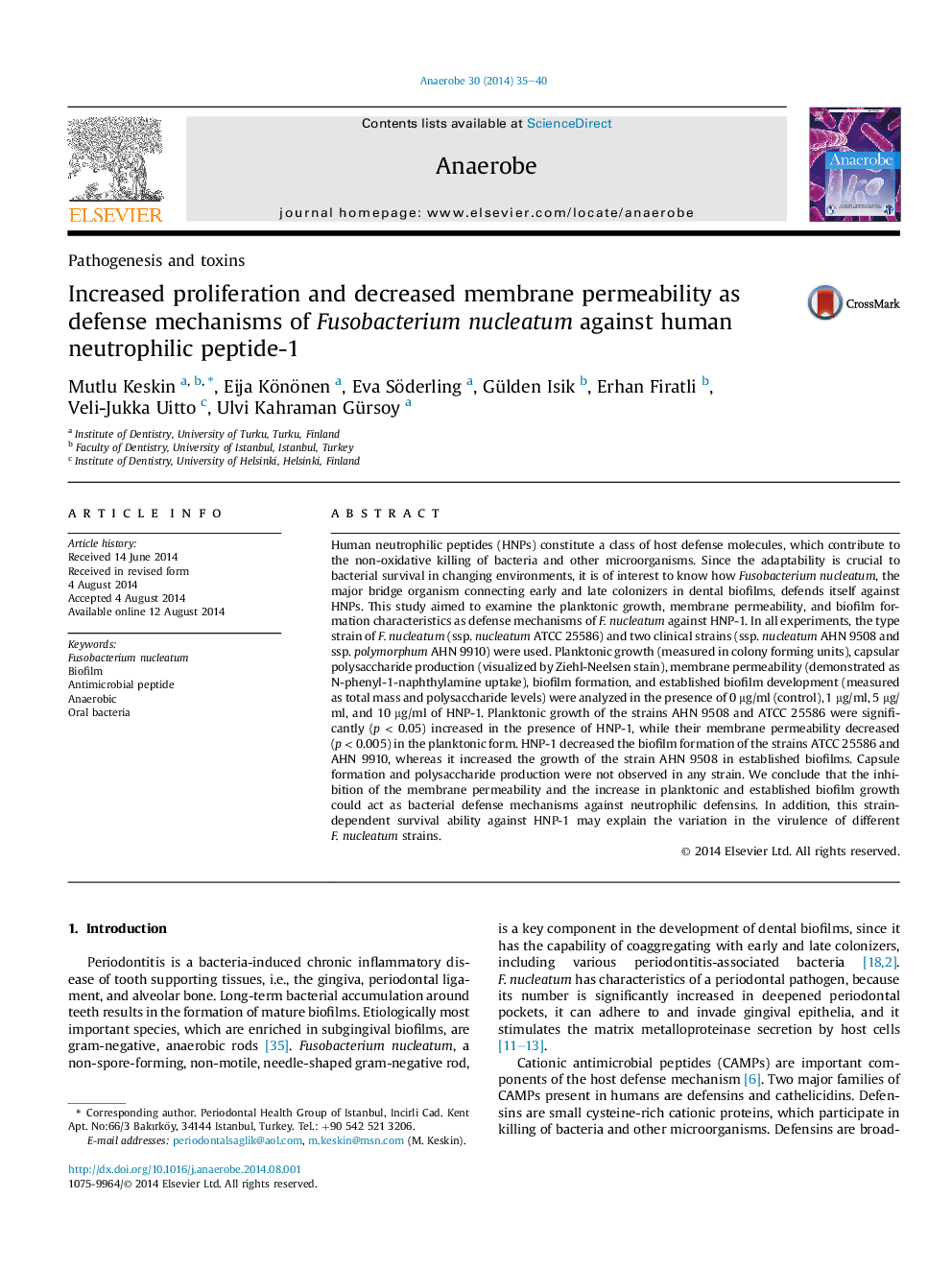| Article ID | Journal | Published Year | Pages | File Type |
|---|---|---|---|---|
| 3395035 | Anaerobe | 2014 | 6 Pages |
•HNPs are a class of host defense molecules, which are present in oral cavity.•HNP-1 modifies planktonic and biofilm characteristics of Fusobacterium nucleatum.•Decrease in membrane permeability was observed in F. nucleatum against HNP-1.•Increase in planktonic growth was observed in F. nucleatum against HNP-1.•Pathogenicity of F. nucleatum may be dependent on its survival ability against HNP-1.
Human neutrophilic peptides (HNPs) constitute a class of host defense molecules, which contribute to the non-oxidative killing of bacteria and other microorganisms. Since the adaptability is crucial to bacterial survival in changing environments, it is of interest to know how Fusobacterium nucleatum, the major bridge organism connecting early and late colonizers in dental biofilms, defends itself against HNPs. This study aimed to examine the planktonic growth, membrane permeability, and biofilm formation characteristics as defense mechanisms of F. nucleatum against HNP-1. In all experiments, the type strain of F. nucleatum (ssp. nucleatum ATCC 25586) and two clinical strains (ssp. nucleatum AHN 9508 and ssp. polymorphum AHN 9910) were used. Planktonic growth (measured in colony forming units), capsular polysaccharide production (visualized by Ziehl-Neelsen stain), membrane permeability (demonstrated as N-phenyl-1-naphthylamine uptake), biofilm formation, and established biofilm development (measured as total mass and polysaccharide levels) were analyzed in the presence of 0 μg/ml (control), 1 μg/ml, 5 μg/ml, and 10 μg/ml of HNP-1. Planktonic growth of the strains AHN 9508 and ATCC 25586 were significantly (p < 0.05) increased in the presence of HNP-1, while their membrane permeability decreased (p < 0.005) in the planktonic form. HNP-1 decreased the biofilm formation of the strains ATCC 25586 and AHN 9910, whereas it increased the growth of the strain AHN 9508 in established biofilms. Capsule formation and polysaccharide production were not observed in any strain. We conclude that the inhibition of the membrane permeability and the increase in planktonic and established biofilm growth could act as bacterial defense mechanisms against neutrophilic defensins. In addition, this strain-dependent survival ability against HNP-1 may explain the variation in the virulence of different F. nucleatum strains.
